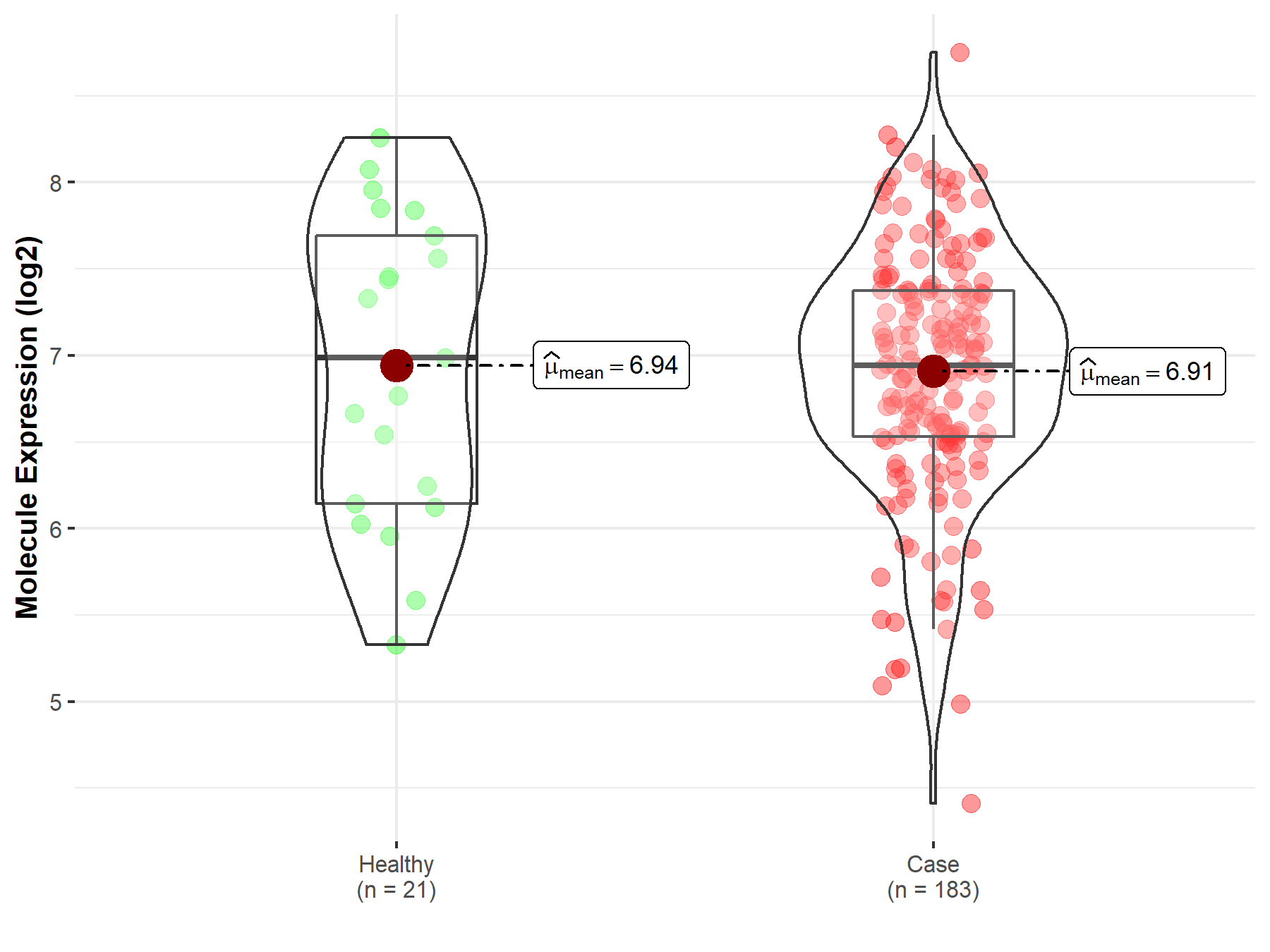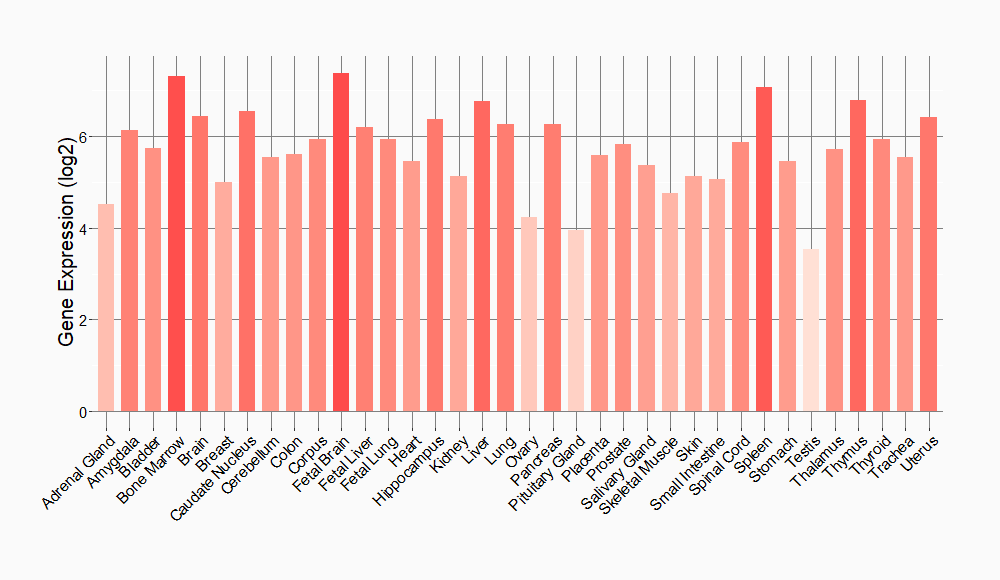Molecule Information
General Information of the Molecule (ID: Mol00252)
| Name |
BH3-interacting domain death agonist (BID)
,Homo sapiens
|
||||
|---|---|---|---|---|---|
| Synonyms |
p22 BID; BID; p15 BID; p13 BID; p11 BID
Click to Show/Hide
|
||||
| Molecule Type |
Protein
|
||||
| Gene Name |
BID
|
||||
| Gene ID | |||||
| Location |
chr22:17734138-17774770[-]
|
||||
| Sequence |
MDCEVNNGSSLRDECITNLLVFGFLQSCSDNSFRRELDALGHELPVLAPQWEGYDELQTD
GNRSSHSRLGRIEADSESQEDIIRNIARHLAQVGDSMDRSIPPGLVNGLALQLRNTSRSE EDRNRDLATALEQLLQAYPRDMEKEKTMLVLALLLAKKVASHTPSLLRDVFHTTVNFINQ NLRTYVRSLARNGMD Click to Show/Hide
|
||||
| Function |
Induces caspases and apoptosis. Counters the protective effect of BCL2.
Click to Show/Hide
|
||||
| Uniprot ID | |||||
| Ensembl ID | |||||
| HGNC ID | |||||
| Click to Show/Hide the Complete Species Lineage | |||||
Type(s) of Resistant Mechanism of This Molecule
Drug Resistance Data Categorized by Drug
Approved Drug(s)
1 drug(s) in total
| Drug Resistance Data Categorized by Their Corresponding Mechanisms | ||||
|
|
||||
| Disease Class: Prostate cancer | [1] | |||
| Resistant Disease | Prostate cancer [ICD-11: 2C82.0] | |||
| Resistant Drug | Cisplatin | |||
| Molecule Alteration | Expression | Down-regulation |
||
| Experimental Note | Revealed Based on the Cell Line Data | |||
| Cell Pathway Regulation | AKT/ERK signaling pathway | Activation | hsa04010 | |
| Cell apoptosis | Inhibition | hsa04210 | ||
| Cell invasion | Activation | hsa05200 | ||
| Cell migration | Activation | hsa04670 | ||
| Cell proliferation | Activation | hsa05200 | ||
| In Vitro Model | DU-145 cells | Prostate | Homo sapiens (Human) | CVCL_0105 |
| In Vivo Model | Nude mouse xenograft model | Mus musculus | ||
| Experiment for Molecule Alteration |
Western blot analysis | |||
| Experiment for Drug Resistance |
Flow cytometry assay | |||
| Mechanism Description | miR-17-92 cluster plays a crucial role in cell growth of the DU145 prostate cancer cells due to regulation of cellular apoptosis-related and proliferation-related proteins, and causes chemo-resistance to cisplatin via activating AkT signaling together with upregulating ERCC1 also contributed to development of cisplatin-resistance. | |||
Clinical Trial Drug(s)
1 drug(s) in total
| Drug Sensitivity Data Categorized by Their Corresponding Mechanisms | ||||
|
|
||||
| Disease Class: Colorectal cancer | [2] | |||
| Sensitive Disease | Colorectal cancer [ICD-11: 2B91.1] | |||
| Sensitive Drug | TRAIL | |||
| Molecule Alteration | Expression | Up-regulation |
||
| Experimental Note | Revealed Based on the Cell Line Data | |||
| Cell Pathway Regulation | TBID/Mitochondria signaling pathway | Activation | hsa04217 | |
| In Vitro Model | SW480 cells | Colon | Homo sapiens (Human) | CVCL_0546 |
| NCI-H508 cells | Colon | Homo sapiens (Human) | CVCL_1564 | |
| HT-29 cells | Colon | Homo sapiens (Human) | CVCL_0320 | |
| SW948 cells | Colon | Homo sapiens (Human) | CVCL_0632 | |
| Experiment for Molecule Alteration |
Western blot analysis | |||
| Experiment for Drug Resistance |
MTT assay; FITC-Annexin V and propidium iodide (PI) assay | |||
| Mechanism Description | The knockdown of miR20a inhibited the translocation of tBID to the mitochondria, which induced the mitochondrial pathway of apoptosis, the knockdown of miR20a also reversed the resistance of TRAIL in established TRAIL-resistant SW480 cells by tBID-mitochondria pathway. | |||
Disease- and Tissue-specific Abundances of This Molecule
ICD Disease Classification 02

| Differential expression of molecule in resistant diseases | ||
| The Studied Tissue | Prostate | |
| The Specified Disease | Prostate cancer | |
| The Expression Level of Disease Section Compare with the Healthy Individual Tissue | p-value: 8.58E-01; Fold-change: -4.35E-02; Z-score: -4.93E-02 | |
|
Molecule expression in the diseased tissue of patients
Molecule expression in the normal tissue of healthy individuals
|
||
| Disease-specific Molecule Abundances |

|
Click to View the Clearer Original Diagram |
Tissue-specific Molecule Abundances in Healthy Individuals


|
||
References
If you find any error in data or bug in web service, please kindly report it to Dr. Sun and Dr. Zhang.
